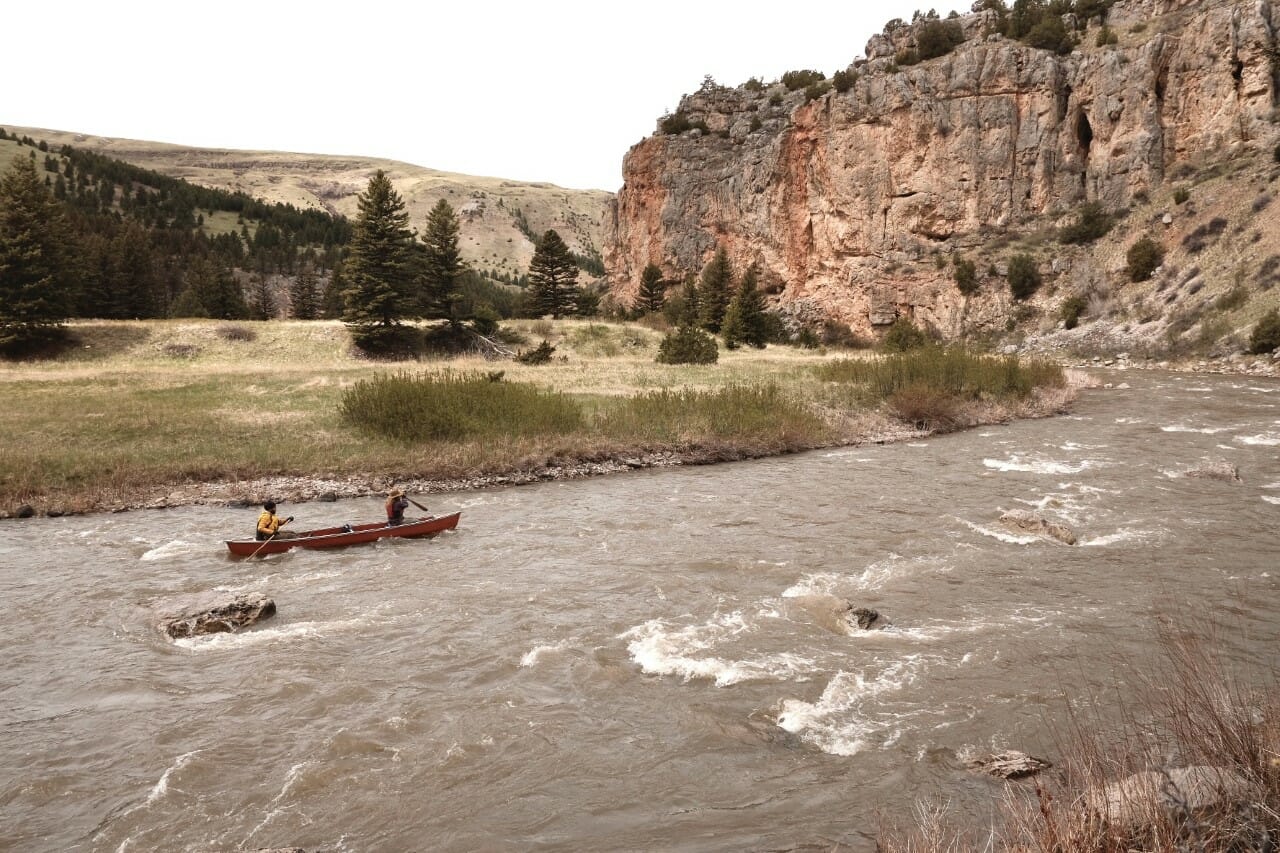Typical spring flows on Montana’s Smith River are completely navigable. But last week, the river’s flows hit an all-time low of 116 cfs. Greg McReynolds photo.
Montana’s fabled Smith River at the Eagle Creek gauge shattered a low-flow record last week, and the outlook for anglers with float permits this summer is beyond bleak.
As of June 18, streamflow at the Eagle Creek gauge measured a flow of 116 cubic feet per second. The long-term median flow for this date is 532 cfs, and the previous low flow ever recorded in the 29-year history of the gauge was 187 cfs, recorded in 2001.
Montana Fish, Wildlife & Parks does not close the river due to low flows, but those who drew a permit to float the river should be aware that they will encounter difficult to nearly impossible floating conditions at present water levels, and in light of that, many permit holders are choosing to cancel their float for this year.
With only one public access site below the boat ramp at Camp Baker, floaters should understand that there is no other public location to exit the river, and that once they launch, they are committed to complete the full 59-mile float no matter how bad they may find conditions.
“Our normal recommendations for suitable river levels for floating are 350 cfs for drift boats, 250 cfs for rafts, and 150 cfs for canoes and kayaks,” said Colin Maas, FWP park manager for the Smith River. “Floating at lower levels may still be possible but is much more dependent upon a group’s equipment load, paddling and rowing skills, and their ability to read the water. And at these low flows, even travelling light, floaters will find that its necessary to get out and drag their boats down numerous lengthy gravel bars.”
With only one public access site below the boat ramp at Camp Baker, floaters should understand that there is no other public location to exit the river, and that once they launch, they are committed to complete the full 59-mile float no matter how bad they may find conditions.
“We fully understand and appreciate how much it means to float the Smith for the folks who were lucky enough to draw a permit,” Maas added. “But we want them to be fully aware and prepared for the difficult conditions they will encounter should they attempt to float the river at these current water levels.”



